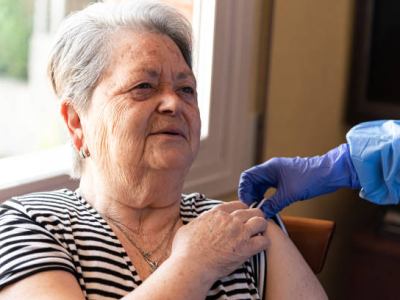FDA says antimicrobial use in food animals is still rising
The use of antimicrobial drugs in farm animals raised for food increased 4% from 2013 to 2014 and a dramatic 22% from 2009 to 2014, the US Food and Drug Administration (FDA) said yesterday in its annual report on such drug use.
When looking at antimicrobials classified as medically important in humans, use in food animals rose 3% from 2013 to 2014 and 23% from 2009 to 2014, the FDA said. Domestic sales and distribution of medically important antimicrobials accounted for 62% of the domestic sales of all antimicrobials approved for use in food-producing animals, the agency said.
Tetracyclines accounted for 70% of these sales, compared with penicillins, 9%; macrolides, 7%; sulfas, 5%; aminoglycosides, 3%; lincosamides, 2%; and cephalosporins and fluoroquinolones, less than 1% each.
Increases from 2013 to 2014 were similar to what the agency reported a year ago.
The increases come despite the FDA's launch in 2014 of its "judicious use" strategy for antibiotics that are important in human medicine and also used in food animals. The agency's Guidance for Industry #213 specifies that drug makers have until December 2016 to make label changes to the targeted antimicrobials and move products from over-the-counter to prescription.
Dec 10 FDA report
Dec 10 FDA press release
Hemorrhagic fever viruses, coronaviruses top WHO R&D preparedness list
Viral hemorrhagic fever (VHF) diseases like Ebola and Marburg, as well as MERS and SARS, both caused by coronaviruses, top a priority list for a World Health Organization (WHO) blueprint for R&D (research and development) preparedness to help control potential future epidemics, the agency said today in a news release.
A panel of scientists and public health experts convened this week in Geneva to develop research priorities for diseases for which few or no medical countermeasures like drugs and vaccines exist. They will review the list annually or as new diseases emerge.
In addition to Ebola, Marburg, MERS (Middle East respiratory syndrome), and SARS (severe acute respiratory syndrome), the list contains three other VHFs: Crimean Congo hemorrhagic fever, Lassa fever, and Rift Valley fever, as well as Nipah virus disease.
"As well as advocating for the initiation or enhancement of the R&D process to develop diagnostics, vaccines, and therapeutics for the five to ten diseases, the Blueprint will also consider behavioural interventions, and filling critical gaps in scientific knowledge to allow the design of better disease control measures," the WHO said in the release.
The panel also designated chikungunya, the recently identified tick-borne disease severe fever with thrombocytopenia syndrome, and Zika virus disease as "serious," requiring WHO action to promote R&D as soon as possible.
Dec 11 WHO news release
ECDC updates Zika threat assessment, CDC issues travel notices
In its latest Zika virus risk assessment, the European Centre for Disease Prevention and Control (ECDC) yesterday provided a glimpse of the illness toll in affected countries and the latest on microcephaly investigation and offered mitigation steps for its member countries. In a related development, the US Centers for Disease Control and Prevention (CDC) posted travel advisories for a growing list of affected countries.
In its fourth risk assessment on the Zika threat, the ECDC said the magnitude of the increase in microcephaly cases associated with the disease has yet to be precisely estimated, and a link to Zika virus can't be confirmed until ongoing investigations are completed. It said investigations are still under way regarding links between Zika virus infections and neurologic manifestations, such as Guillain-Barre syndrome.
The ECDC said the health ministry in Brazil—the worst-hit country—has given a preliminary estimate of 440,000 to 1,300,000 cases. It added that Colombian health officials report 578 confirmed and 3,700 suspected cases in 26 of its 36 territories.
The ECDC said the outbreak in the Americas and the South Pacific is rapidly evolving and will likely continue, given how widely Aedes mosquitoes are distributed in the areas. With that in mind, and the possibility of severe health complications from Zika virus infection, the ECDC urged its member countries to take several steps, including increasing surveillance for imported cases, and advising travelers, especially pregnant women, to take precautions to protect themselves.
Dec 10 ECDC risk assessment
Meanwhile, the CDC yesterday posted watch level 1 (green) travel notices for Zika virus in South America, Mexico, and Central America. Watch level 1 means travelers should take usual precautions.
The agency warned that locally acquired cases have been reported in South America (Brazil, Colombia, Paraguay, Suriname, and Venezuela), and that Brazilian health officials have raised concerns about a possible association with increased numbers of babies born with birth defects, and that pregnant women traveling to the area should take extra steps to protect themselves from mosquito bites. It also warned of cases in Mexico, El Salvador, Guatemala, and Panama.
Dec 10 CDC travel notices
Cholera outbreak in Tanzania surpasses 10,000 cases
Tanzania's cholera outbreak has now topped 10,000 cases and spread to 21 of the country's 30 regions as the WHO has stepped up its response, the agency said in an update yesterday.
As of Dec 8, officials have reported 10,412 cases and 159 deaths, the WHO said. That's up from 9,871 cases and 150 deaths in 19 regions reported in its last update on Nov 26. Dar es Salaam, the nation's largest city, accounted for 44% of all cases, and the number of cases in the country doubled from the end of October to the end of November. The outbreak began in late August.
The WHO has declared the outbreak an organization-wide priority, enabling it to deploy additional resources to contain the disease.
"The current outbreak is unusual because of its vast geographical spread within a short period of time," said Rufaro Chatora, MBChB, MPH, WHO's representative to Tanzania. "The beginning of the rainy season may make it harder to contain outbreak."
Dec 10 WHO update











